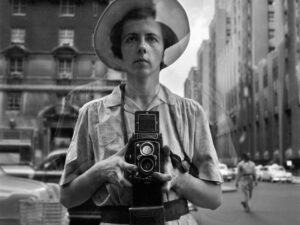Lee Miller (1907-1977) led a relentlessly cosmopolitan life. She knew Max Ernst and Paul Éluard, and counted Jean Cocteau, Joan Miró and Pablo Picasso amongst her friends. As a teenager in America, her face plastered the cover of Vogue. Miller moved to France in 1929, working with Man Ray as a model / apprentice. Soon she had her own studio in New York, where she photographed a young Joseph Cornell and the first African American opera, its libretto penned by Gertrude Stein.
Marrying an Egyptian businessman, Miller began again in Cairo. Here she shot landscapes, enclosed by empty picture frames. The voids mirrored the state of her heart. When the marriage ended on amicable terms, after an affaire de coeur with the surrealist Roland Penrose, Miller flourished as a war correspondent. She covered the Blitz and its aftermath; captured the liberation of Paris; documented the shaved, humiliated heads of females. Miller settled, finally, in Sussex, but did not idle, reinventing herself as a legendary cook.
Written by Miller’s granddaughter, Modern Women Artists: Lee Miller, a slim volume from Eiderdown Books introduces the photographer’s life, including images that have rarely been seen. The writing captures the spirit of an individual and her age in macroscope. When Ami Bouhassane reproduces Man Ray’s conflation of the Sabbatier effect with solarisation, two distinct ways of overexposing photographs, she misses an opportunity to disentangle the techniques. Even still, the book’s thesis, that Miller thematises the objectification of female forms, does engender discussion. Does objectification mean women literally reduced to objects, as in Miller’s image of a severed breast, plated on flatware? Or is it a formal process: the body aestheticised in fashion magazines?
Hunter Dukes
Find out more here.
Lead image: Lee Miller, Portrait of Space, Nr Siwa, Egypt, 1937. © Lee Miller Archives, England 2017. All rights reserved.





